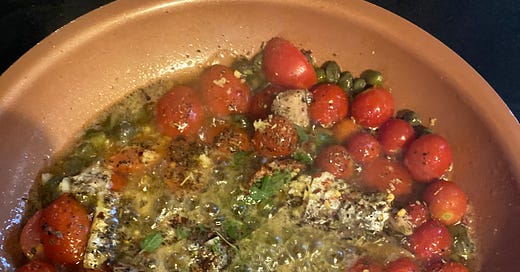I’m Jonathan and I’m a cookbook junkie. I’ve long been drawn to the things — the glossy, perfectly arranged photos of unattainable delights (food porn, for sure); the variety of recipes; the insights offered by smart chefs. I think my first was a gift from my mom, the Coyote Cafe Cookbook, by Mark Miller. I appreciated it not only because of the great food, but also because a majority of the recipes weren’t food porn, they were actually attainable and doable. I flipped through it so often that it eventually disintegrated.
There’s another type of cookbook, however, which I’m not so fond of. I won’t mention any names, but they are the real food porn: Chock full of pretty pictures and enticing dishes — that are almost impossible to recreate in your home kitchen. Either the ingredients are nowhere to be found, the cooking process is a byzantine task spread out over several days, or it has so many separate components that it makes no sense to create it for a few people.
And you know what else I hate? When these cooking blogs spend several thousand words prefacing the actual recipe with inane chattering about why they like the recipe or explaining what a peach is or some such nonsense aimed only at getting you to stay on the page longer to drive up their website metrics. So I’m going to get to the point with a recipe that is delicious, easy, and attainable: Sardine orzo. It’s a one-pan dish, the ingredients are all readily available (okay, orzo isn’t everywhere, it turns out, but they do have it at the Durango City Market, so that’s good enough for me), and it’s bursting with flavor because the orzo, which is a rice-like pasta, is cooked kind of like risotto. I’m sharing it because everyone I cook it for loves it — even folks who aren’t fond of sardines.
Sardine Orzo
Ingredients:
Canned sardines, preferably packed in olive oil (but water works, too). I do one can per person, but you can do less if you like.
Orzo: Follow the directions on the package for however many servings you want.
Fish, vegetable, or chicken broth or water. This is for cooking the orzo. Broth will impart more flavor, but it’s not necessary. I use a couple of cups of liquid to each cup of dried orzo.
Garlic, chopped — one to four cloves, depending on your taste.
Capers
Lemon
Cherry tomatoes, halved (optional)
Oil cured olives, pitted and roughly chopped (optional)
Olive oil — a lot.
Butter — a dollop (for sauteing the orzo before cooking)
White wine, 1/3 cup (optional)
Oregano (dried or fresh or both)
Salt
Pepper
Red chile flakes





Process:
In a saucepan large enough to hold all of the cooked orzo, heat up the capers without any oil. This evaporates the water inside, so you don’t get a lot of that water-hot-oil spittle thing going on. When the capers start to dry out, add enough oil to cover the bottom of the pan, along with the chopped garlic, the sardines (with their oil or drained if they’re in water), and, if you use them, the cherry tomatoes. Add dried oregano, salt, pepper, and chile flakes to taste. Sauté it until it makes a nice, oily, juicy, aromatic mess. (It don’t look pretty).
Meanwhile, heat a pot of broth or water or a mix until just simmering. I usually use about two-three cups broth to one cup dry orzo, and then add a bit. It may not work out perfectly, which is okay; you can add unheated water at the end if necessary.
Remove the sardine mix from the pan and set aside in the dish you’ll be serving the orzo in. Mix in the olives and squeeze a lemon over all of it. Don’t wash out the saucepan! Leave some juices and some of those bits.
Put the butter in the saucepan that you used for sautéing and turn it up to medium high. When it’s melted and bubbling, add the orzo and a pinch of salt. Coat the orzo with the butter and stir it around until it just starts to get golden brown.
Add the white wine to the orzo/butter and boil off the alcohol
Then start adding the broth or water one cup at a time to the orzo, stirring frequently. The idea is to cook the broth down to just about nothing before adding the next cup. You gotta keep stirring to ensure the orzo doesn’t stick or burn. This method does something to the starches, making the dish much creamier (a la risotto). If you want a more lemony/lighter tasting dish, you can add lemon zest to the risotto as it’s cooking.
Keep adding broth/water and cooking it down until the orzo is tender but slightly al dente (Or whatever texture you prefer).
Add the sardine mix to the cooked orzo, stir it all up, and serve! If you’re a wine-drinker, pair it with a chilled, minerally white.






